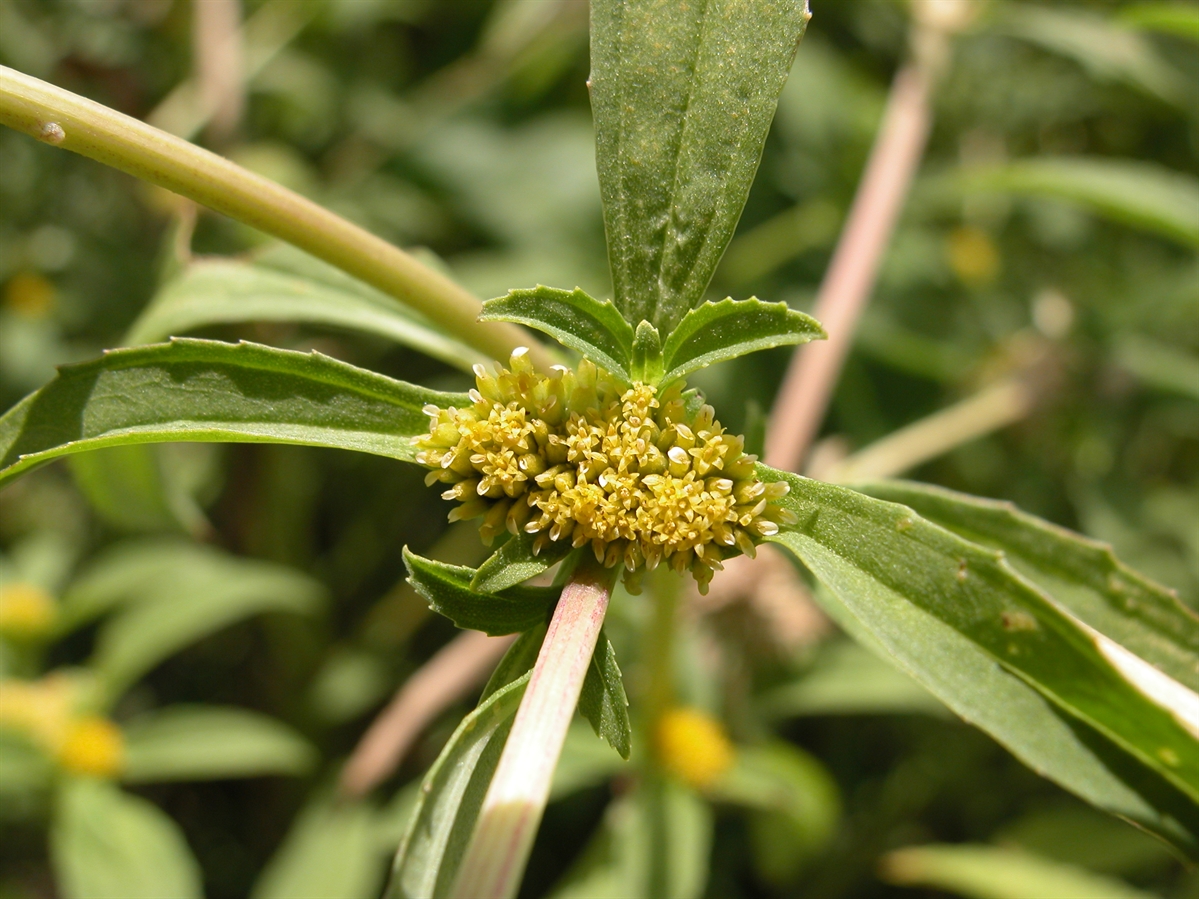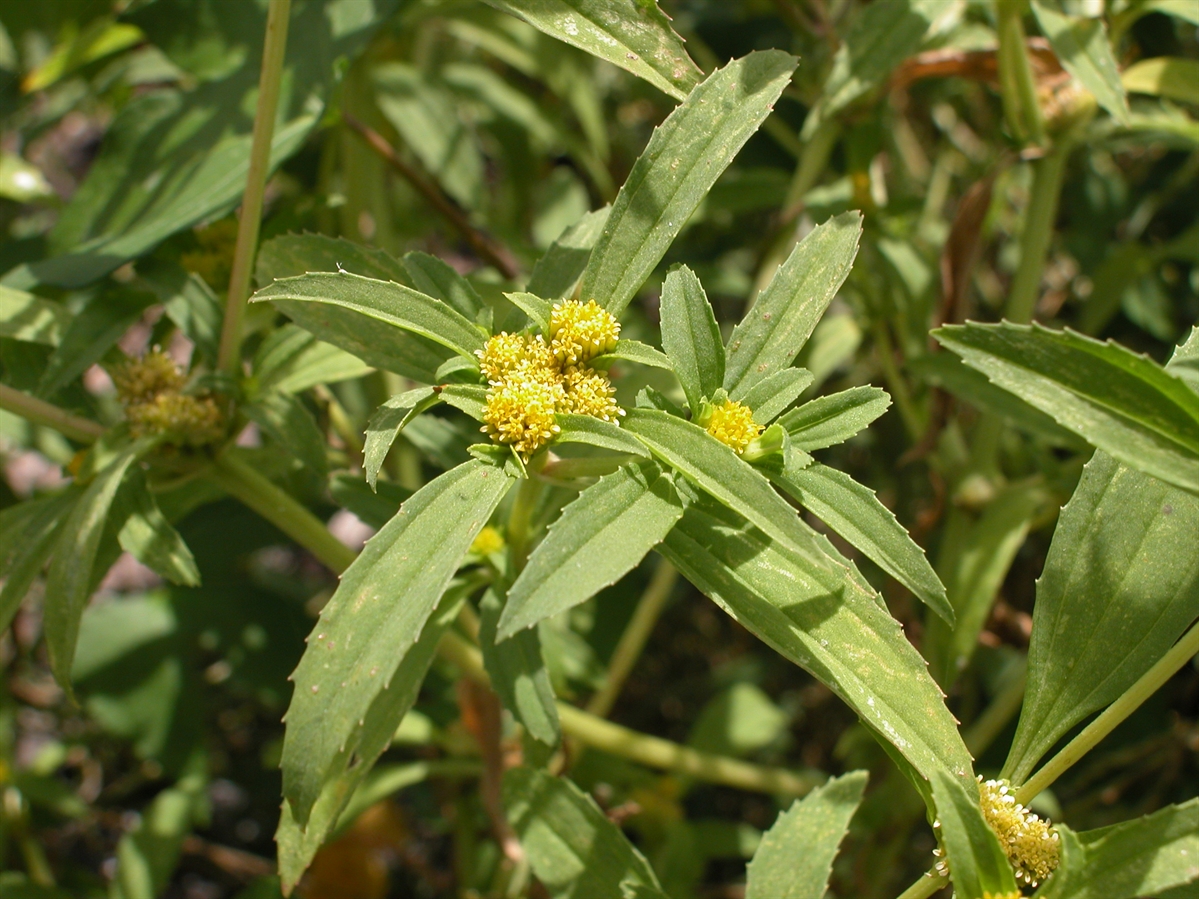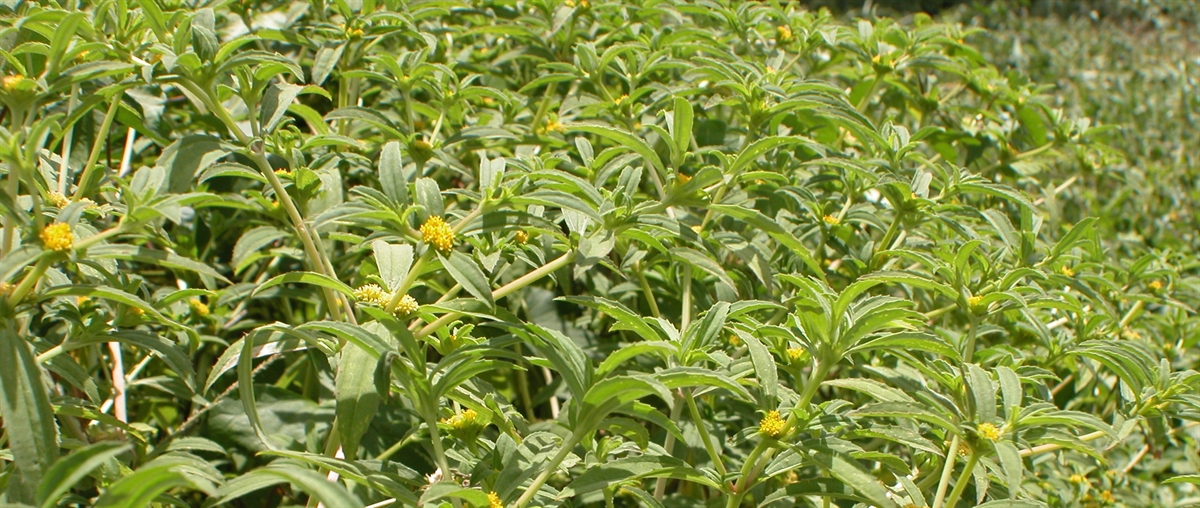Habit: Flaveria trinervia is a highly branched annual up to 40 cm in height (usually less). Leaves arranged oppositely, elliptic to lanceolate, to 12 cm in length and 4 cm wide, with pubescence or glabrous. Leaves 3 nerved with a dentate margin and acute leaf apex.
There are both perfect and imperfect (carpellate) flowers in few flowered heads. The heads are subtended by a series of involucral bracts (phyllaries). The perfect (disc) flowers are in the center and the imperfect (ray) flowers are arranged around the edge of the heads. Each flower is subtended by a bract. The pubescent heads are sessile terminally and axillary. Unlike most in the family there is no calyx that has been modified as a ring of small projections (pappus).
The incomplete, imperfect, zygomorphic (ray) flowers have fused yellow petals (3 lobed apex) and no stamens. The complete, perfect, actinomorphic (disc) flowers have a corolla with 5 fused, yellow petals. There are 5 stamens fused at their base. In both types of flowers, the ovary is inferior with a single locule but only the imperfect flowers have functional ovules. The fruit is an achene at maturity.
Habitat: Flaveria trinervia grows in Human Altered environments (yards, roadsides, old fields) and wet areas.
Distribution: Flaveria trinervia occurs throughout the islands of the Lucayan Archipelago, and both tropical and subtropical western hemisphere.
Medicinal/Cultural/Economic usage: Flaveria trinervia is not known to be used medicinally in the Lucayan Archipelago.


